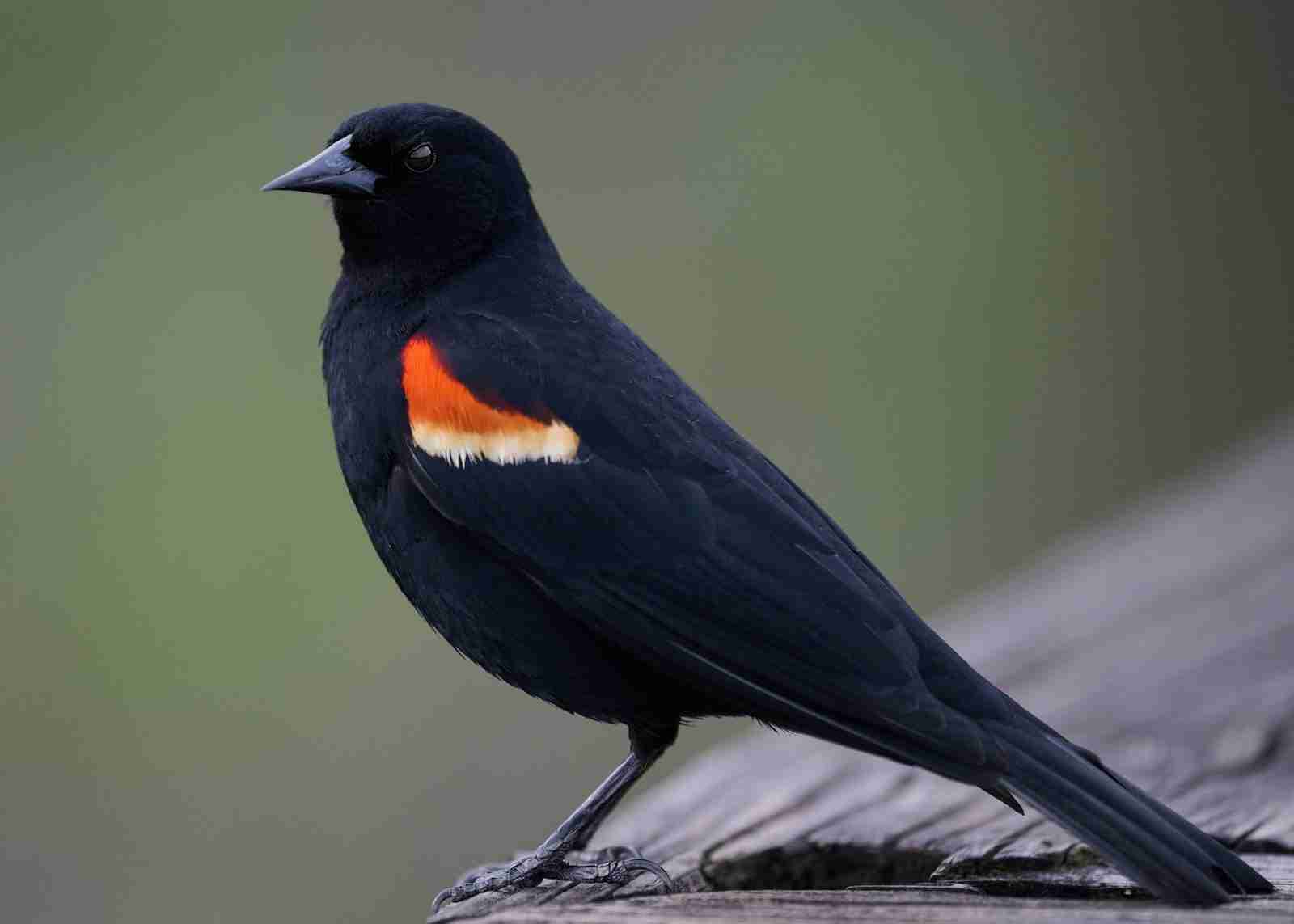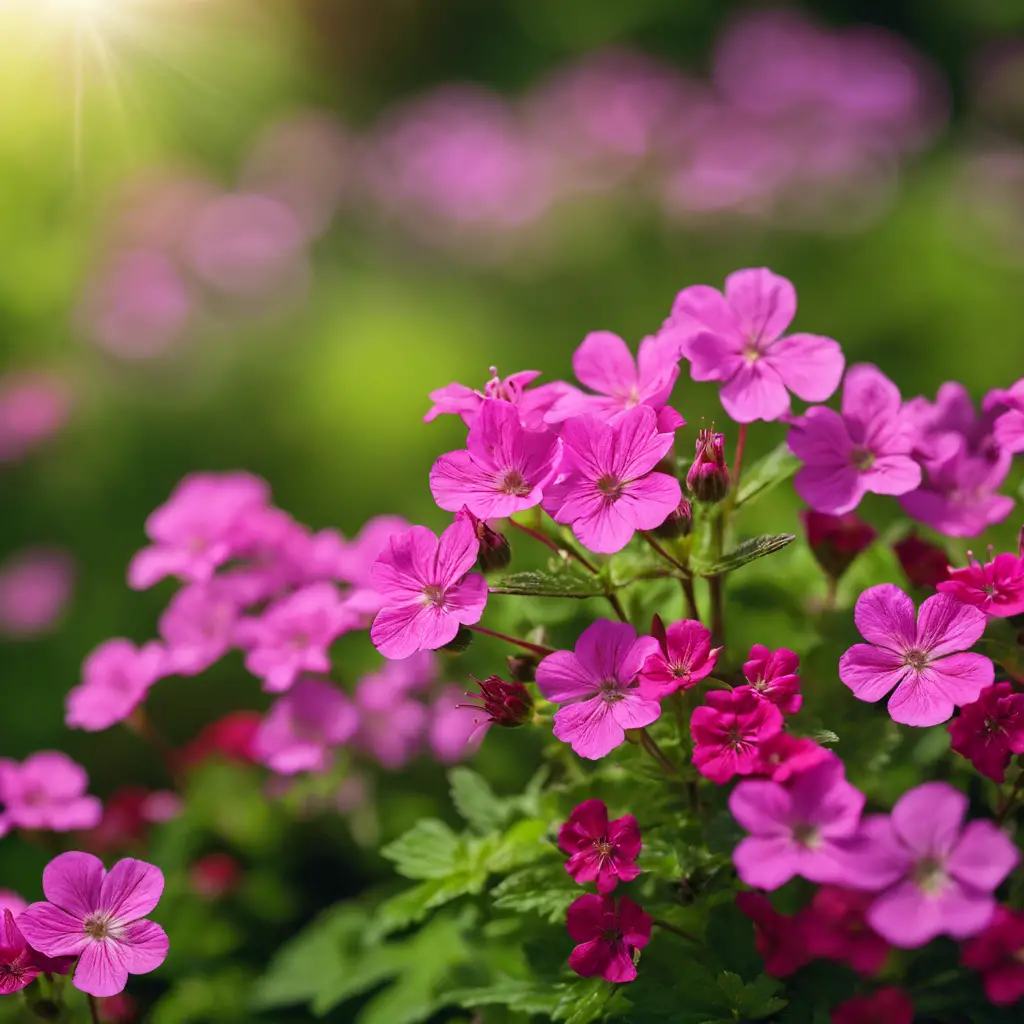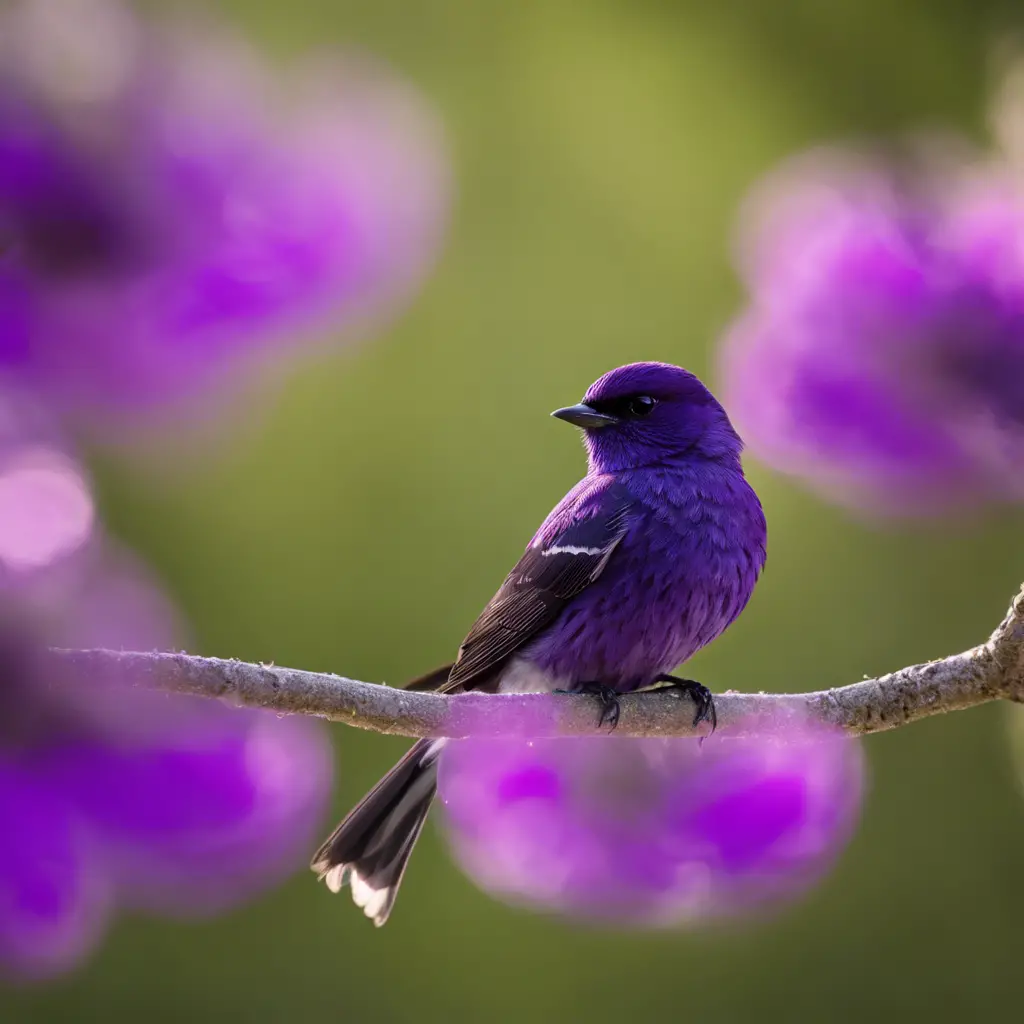In Pennsylvania, you’ll find a variety of black birds. From the Red-winged Blackbird to the Baltimore Oriole, these species bring diversity to the avian population.
The Common Grackle and Brown-headed Cowbird are also common sightings. Keep an eye out for the Rusty Blackbird, Great-tailed Grackle, Bronzed Cowbird, Shiny Cowbird, and even the Giant Cowbird.
Understanding the different characteristics and behaviors of these black birds can help you appreciate the intricate beauty of nature.
Key Takeaways
- Blackbirds in Pennsylvania include species such as the Red-winged Blackbird, Common Grackle, Brown-headed Cowbird, Baltimore Oriole, and Rusty Blackbird.
- There are also other blackbird species found in Pennsylvania, including the Yellow-headed Blackbird, Bobolink, Eastern Meadowlark, Orchard Oriole, and European Starling.
- Migratory patterns and breeding behavior vary among blackbird species, such as the Great-tailed Grackles, Bronzed Cowbirds, Shiny Cowbirds, and Giant Cowbirds.
- The presence of Bronzed Cowbirds in Pennsylvania has negative impacts on native bird species, including decreased reproductive success, disruption of ecosystems, competition for resources, and displacement of native cavity-nesting species. Conservation efforts focused on habitat preservation and mitigating the effects of brood parasitism are crucial.
Red-winged Blackbird
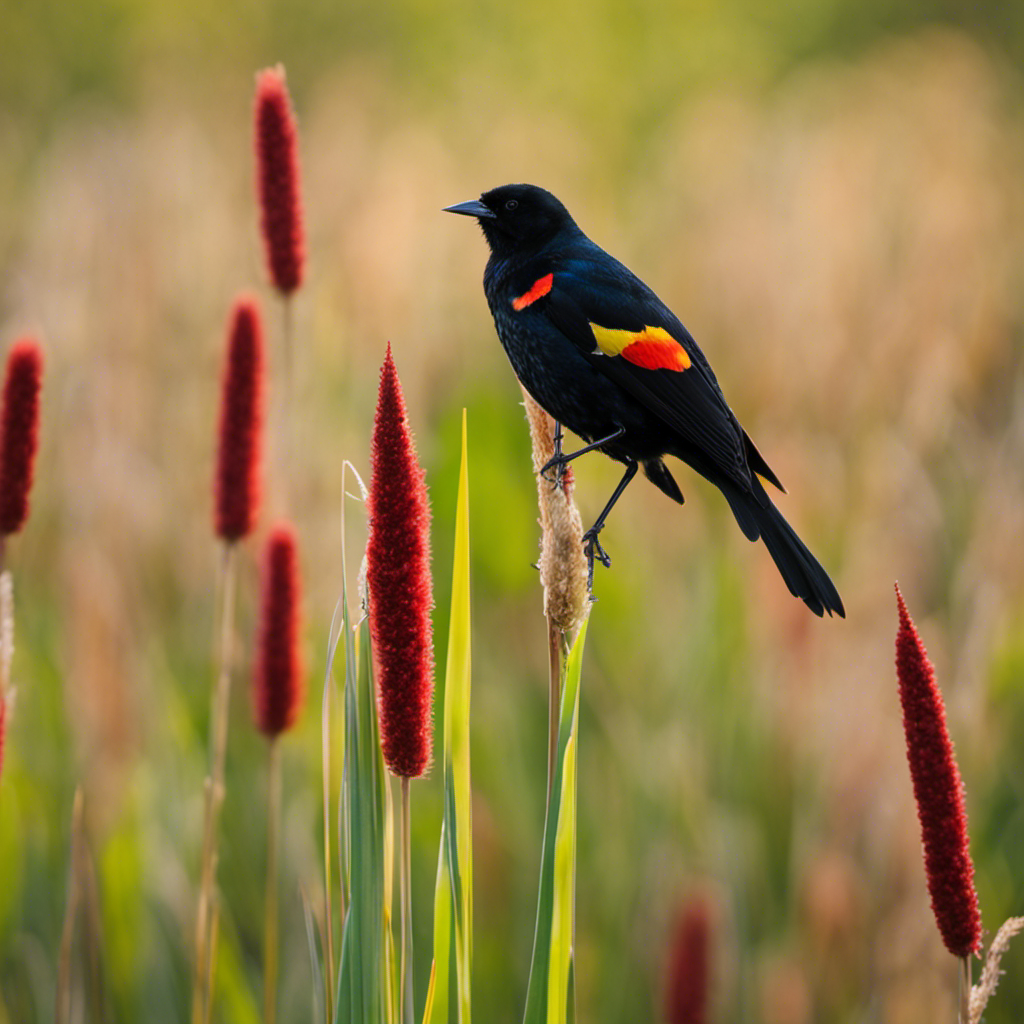
You should definitely keep an eye out for the red-winged blackbird during your birdwatching trip in Pennsylvania. This bird species can be found in a variety of habitats, including marshes, wetlands, and meadows. They’re known for their distinctive red and yellow shoulder patches, which the males use to attract mates and establish territory.
Red-winged blackbirds are migratory birds, with populations in Pennsylvania typically arriving in early spring and departing in late summer or early fall. During the breeding season, males will perch on tall vegetation and sing to attract females. Females build nests in dense vegetation, usually close to water, and lay 3-5 eggs.
The red-winged blackbird is a fascinating bird to observe due to its unique habitat preferences, migration patterns, and breeding behavior.
Common Grackle

If you’re interested in learning more about black birds in Pennsylvania, it’s worth exploring the habits and characteristics of the common grackle.
The common grackle (Quiscalus quiscula) is an interesting black bird species found in Pennsylvania. It’s known for its unique behaviors and habitat preferences.
Common grackles are highly adaptable and can be found in a variety of habitats, including woodlands, meadows, and urban areas. They’re social birds and can often be seen in large flocks, especially during the breeding season.
To attract and observe common grackles in your backyard, you can provide them with a suitable habitat by offering bird feeders with sunflower seeds, cracked corn, and suet. You may also consider planting trees and shrubs that provide nesting sites and cover.
Brown-headed Cowbird
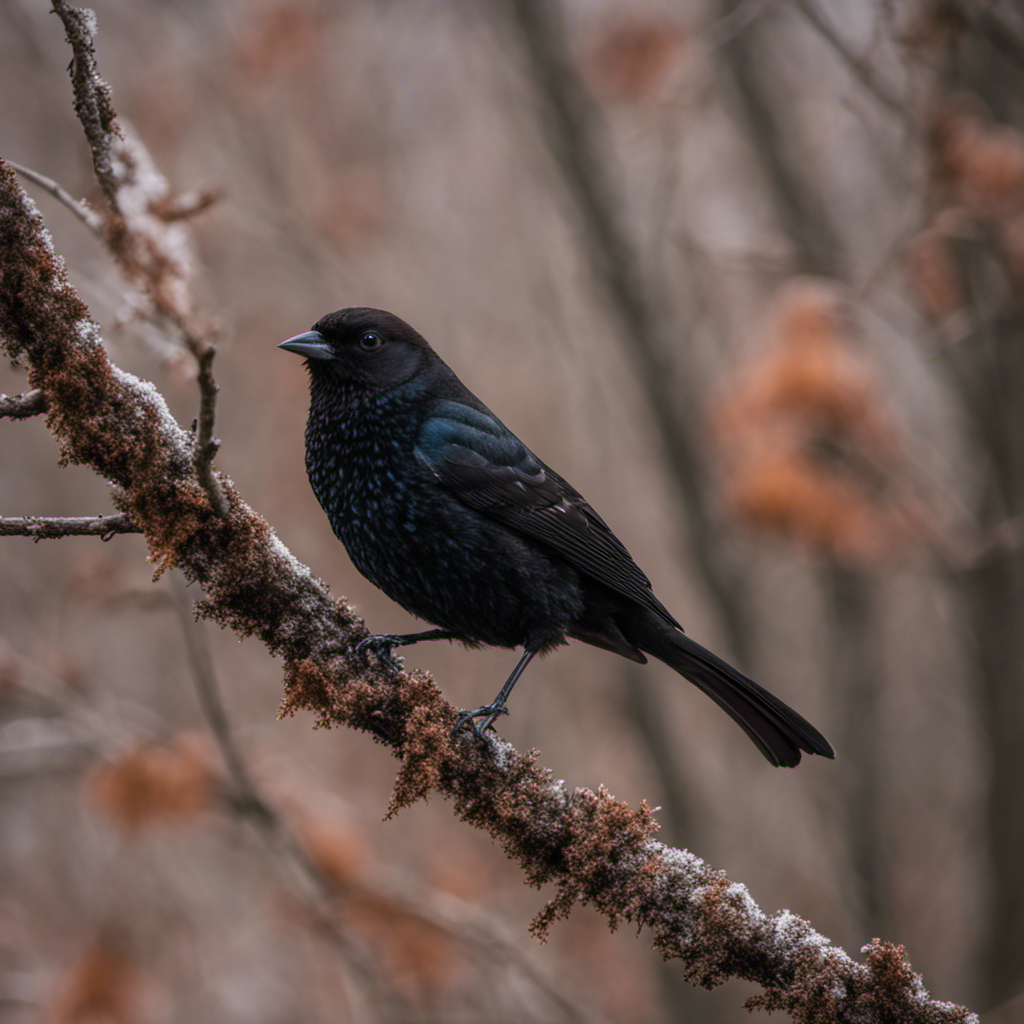
To better understand the habits and behavior of the brown-headed cowbird, you can observe their interactions with other bird species. One important aspect of their behavior is their reproduction strategy. Brown-headed cowbirds are known as ‘brood parasites,’ meaning they lay their eggs in the nests of other bird species, leaving the responsibility of raising their young to the host birds. This unique strategy allows them to focus on reproduction without the need for building nests and raising their own offspring.
However, this behavior has significant impacts on other bird species in Pennsylvania. The presence of brown-headed cowbirds can negatively affect the reproductive success of the host birds. The cowbird eggs often hatch earlier than the host eggs, and the cowbird chicks outcompete the host chicks for food and attention from the parents. This can result in reduced population sizes and even local extinctions of some bird species.
Furthermore, the cowbirds’ parasitic behavior can disrupt natural ecosystems and alter the composition of bird communities. Therefore, it’s crucial to study and understand the reproduction behavior of brown-headed cowbirds to effectively manage their impact on other bird species in Pennsylvania.
Baltimore Oriole
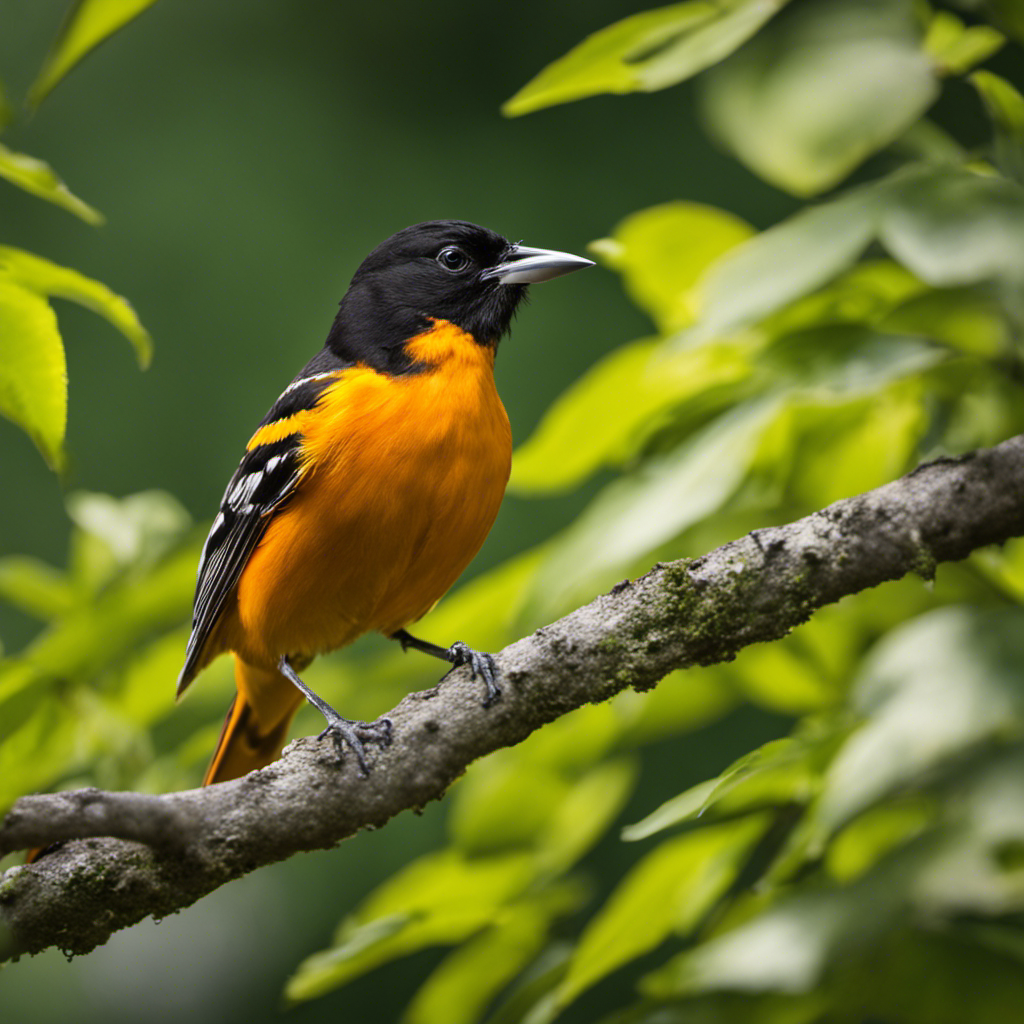
Have you seen any Baltimore Orioles in Pennsylvania this year?
The Baltimore Oriole (Icterus galbula) is a migratory bird species that can be found in Pennsylvania during the summer breeding season. These birds are known for their vibrant orange and black plumage, making them easily recognizable.
Here are some key points about the Baltimore Oriole:
Migration patterns: Baltimore Orioles spend their winters in Central America and the Caribbean, but they migrate north to breed during the summer months. Pennsylvania is within their breeding range, and they can be seen here from April to September.
Nesting habits: Baltimore Orioles build intricate hanging nests that are woven together using plant fibers, grasses, and other materials. They often choose tall trees or shrubs near open areas for their nests.
Diet: These birds primarily feed on insects, fruits, and nectar. They’ve a specialized brush-like tongue that allows them to efficiently extract nectar from flowers.
Vocalizations: Baltimore Orioles have a melodious song consisting of clear, flute-like notes. Males often sing to defend their territory and attract mates.
Conservation status: The Baltimore Oriole is considered a species of least concern, but habitat loss and pesticide use can impact their populations.
Understanding the migration patterns and nesting habits of the Baltimore Oriole can help researchers and bird enthusiasts track their populations and conservation efforts more effectively. Keep an eye out for these stunning birds during their summer stay in Pennsylvania!
Rusty Blackbird
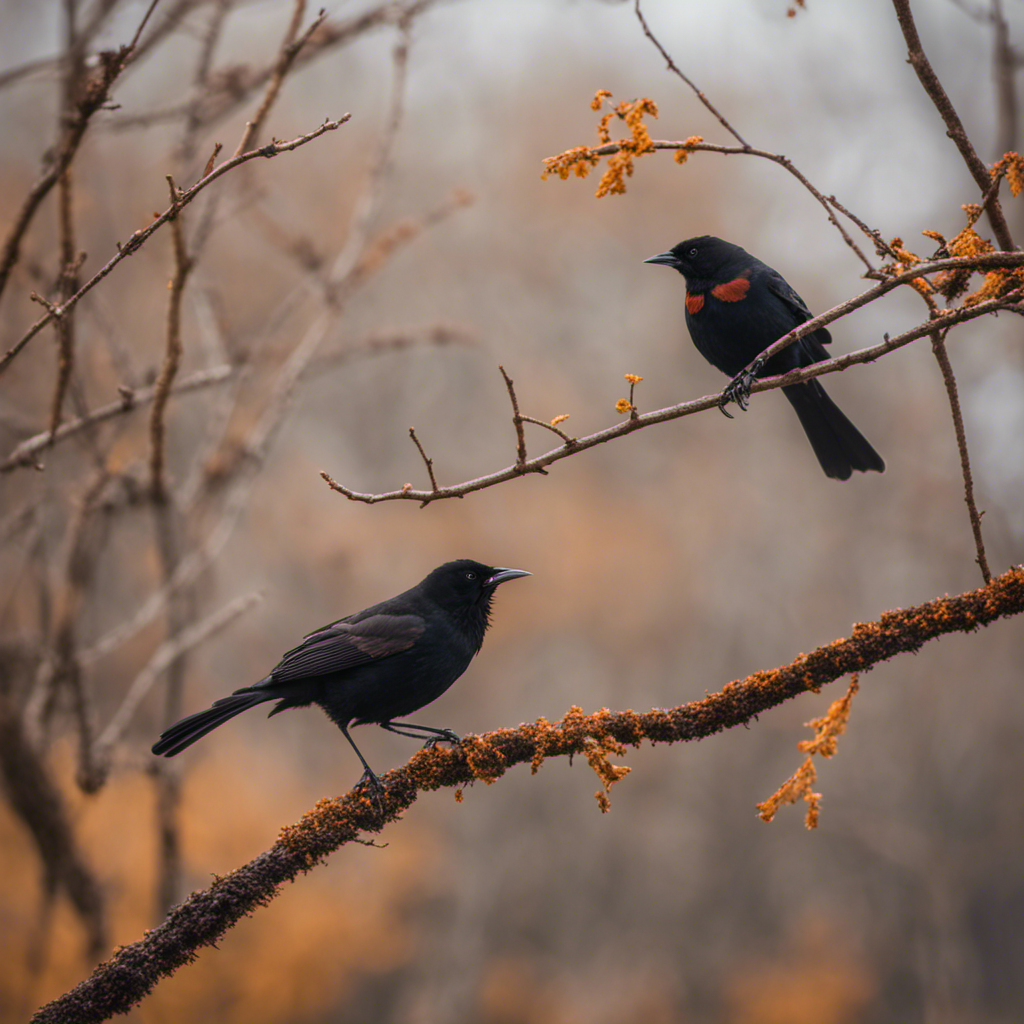
You should keep an eye out for the Rusty Blackbird, as it’s a rare sight in Pennsylvania.
This bird, scientifically known as Euphagus carolinus, is primarily found in wetland habitats, such as marshes, bogs, and swamps. It prefers areas with dense vegetation, such as shrubs and trees, where it can find cover and forage for food.
During its breeding season, which occurs from late May to early July, the Rusty Blackbird can be found in the northern parts of the state, where it builds its nest in trees close to water.
However, during the winter months, these birds migrate to the southern United States and even Central and South America.
It’s important to understand the habitat preferences and migration patterns of the Rusty Blackbird to protect its population and ensure its survival in Pennsylvania.
Brewer’s Blackbird
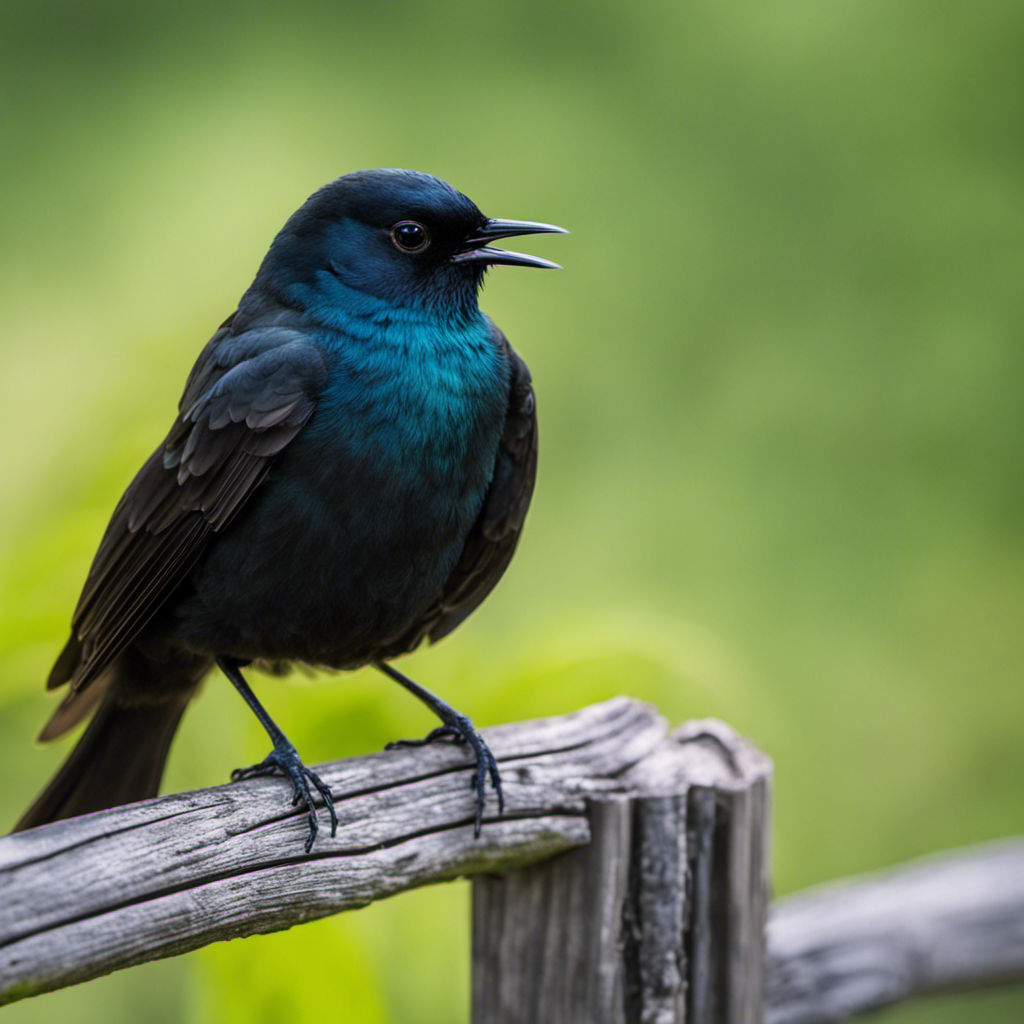
Keep an eye out for the Brewer’s Blackbird, as it’s a common sight in Pennsylvania. This bird is known for its distinctive black plumage and yellow eyes. It can be found in a variety of habitats, including open fields, farmlands, and urban areas.
The Brewer’s Blackbird is an omnivorous species, feeding on a diet that consists of insects, seeds, fruits, and even small vertebrates.
When it comes to mating and nesting behavior, these birds are monogamous and form strong pair bonds. They build their nests in shrubs, trees, or even man-made structures. The female lays her eggs and both parents take turns incubating them.
Once the eggs hatch, both parents share the responsibilities of feeding and raising the chicks until they’re ready to fledge.
Yellow-headed Blackbird
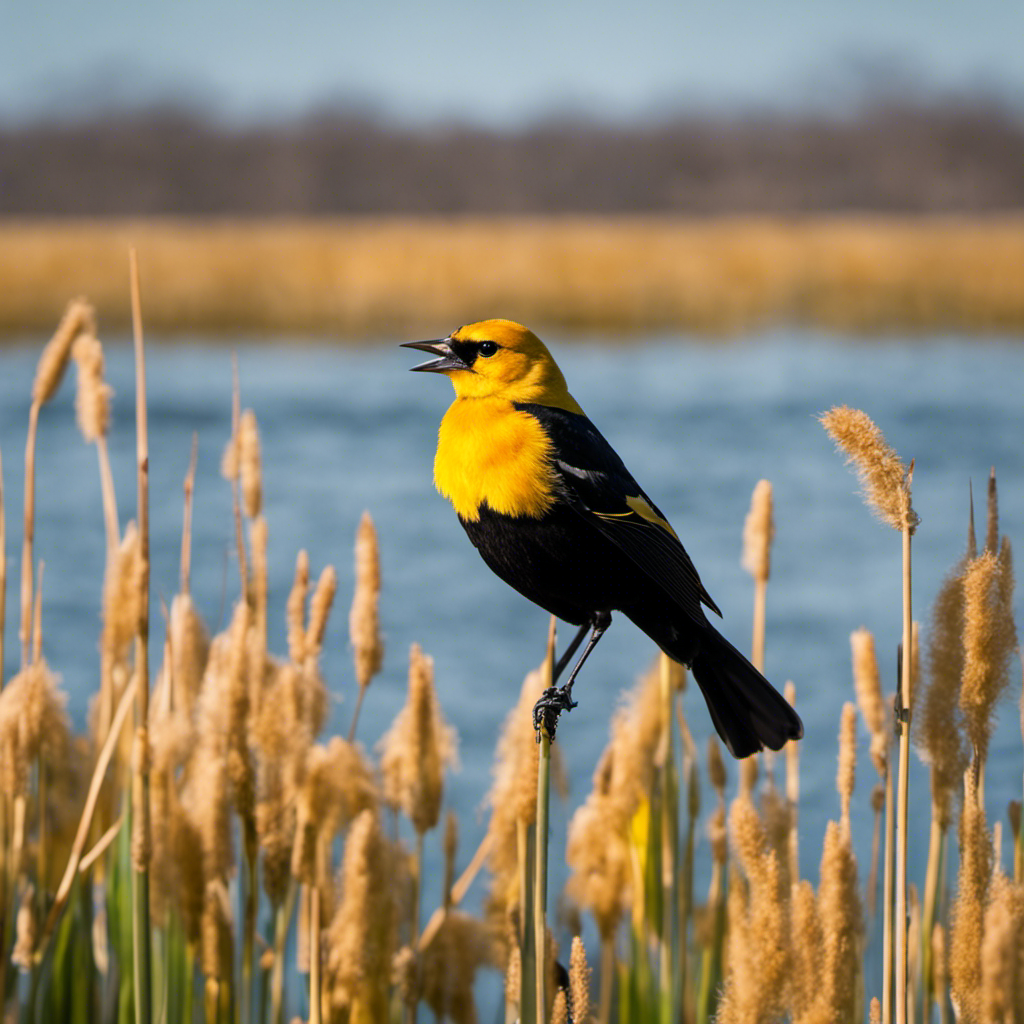
Do you know if the Yellow-headed Blackbird is a common sight in Pennsylvania, or is it a more rare bird? Let’s delve into the habitat preferences and breeding behavior of this intriguing species. To provide a clearer understanding, let’s examine the following table:
| Habitat Preferences | Breeding Behavior |
|---|---|
| Wetlands | Colonial |
| Marshes | Polygynous |
| Reeds | Synchronous nesting |
The Yellow-headed Blackbird is known to favor wetland areas, such as marshes and reeds, for its habitat. These locations provide the necessary resources for their survival, including food and nesting sites. When it comes to breeding behavior, this species exhibits colonial nesting, where multiple pairs nest in close proximity. Additionally, they are polygynous, meaning that males may mate with multiple females. Synchronous nesting, where all females lay their eggs around the same time, is also observed in this species. Understanding these aspects of the Yellow-headed Blackbird’s behavior can help us appreciate and conserve this unique bird.
Bobolink
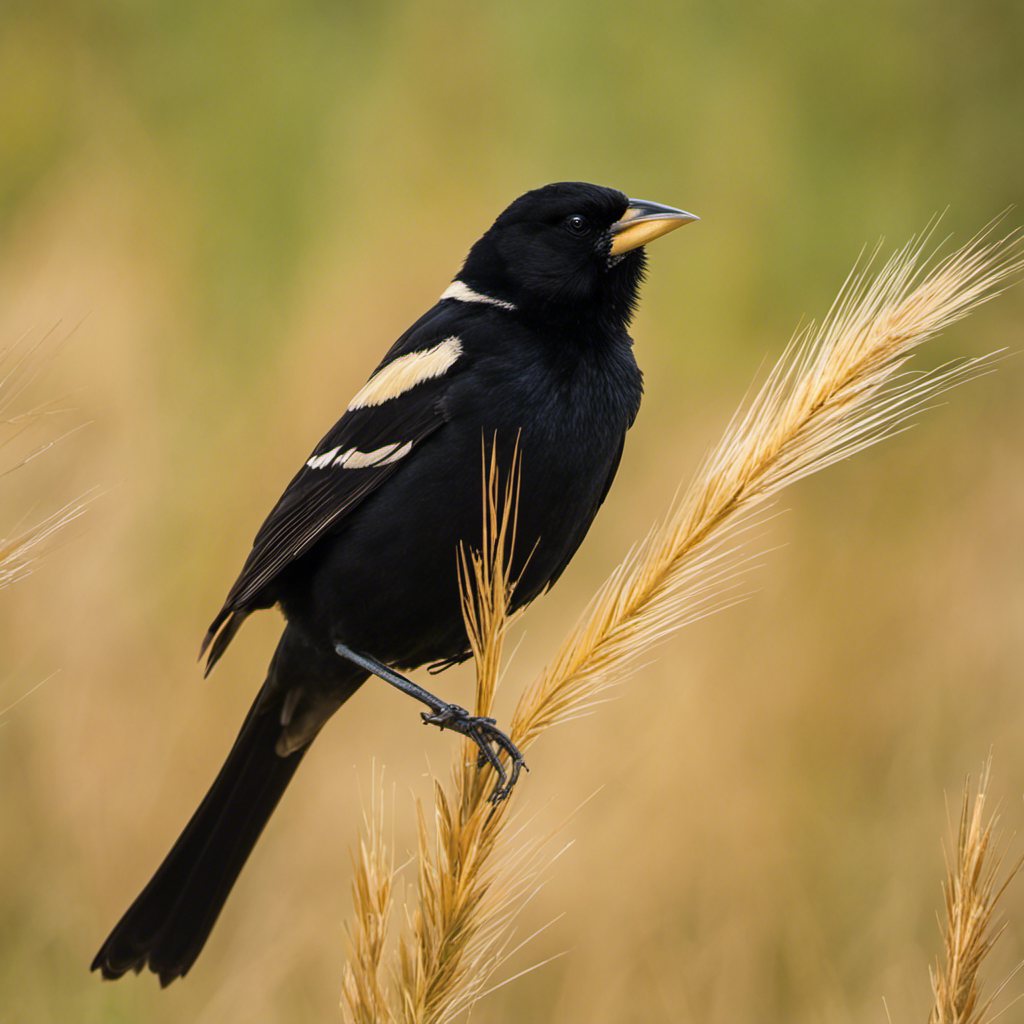
Have you ever seen a Bobolink flying through the fields and perching on the fence posts? These charismatic birds are known for their striking black and white plumage, with males displaying a vibrant yellow cap during breeding season.
Bobolinks are migratory birds that breed in North America and spend their winters in South America. Their migration patterns cover impressive distances, with some individuals traveling over 12,000 miles round trip.
Unfortunately, bobolink populations have been declining due to habitat loss and agricultural practices that destroy their nesting sites. To protect these birds, conservation efforts have focused on preserving grassland habitats and promoting sustainable farming practices that provide suitable nesting conditions.
By raising awareness and implementing conservation measures, we can help ensure the future survival of these beautiful and ecologically important birds.
- Bobolinks have one of the longest migratory journeys of any songbird
- They rely on grasslands for nesting and foraging
- Conservation efforts aim to protect and restore grassland habitats
- Sustainable farming practices can benefit bobolink populations
- Collaboration between landowners, conservation organizations, and policymakers is crucial for effective bobolink conservation.
Eastern Meadowlark

You should listen for the Eastern Meadowlark’s melodious song and watch for its distinctive yellow breast as you explore grassland habitats.
The Eastern Meadowlark (Sturnella magna) is a bird species that can be found in various grassland habitats across North America, including the eastern United States. Conservation efforts for this species have been focused on preserving and restoring its preferred grassland habitats, as they’re crucial for its survival.
Eastern Meadowlarks prefer open areas with short grasses, such as pastures, meadows, and prairies. These habitats provide the necessary food sources, nesting sites, and perching spots for the birds. Protecting and managing grasslands, while minimizing disturbances, is essential for maintaining healthy populations of Eastern Meadowlarks.
Orchard Oriole

While exploring the grassland habitats of Pennsylvania, be sure to keep an eye out for the Orchard Oriole during the spring migration season. This vibrant migratory bird is known for its striking plumage and melodious song, making it a delight to observe in the wild.
The orchard oriole is known to nest in the tall trees of Pennsylvania, particularly in areas with ample food sources and suitable nesting locations. Conservation efforts for the orchard oriole have been implemented to ensure the preservation of their habitats and populations.
European Starling
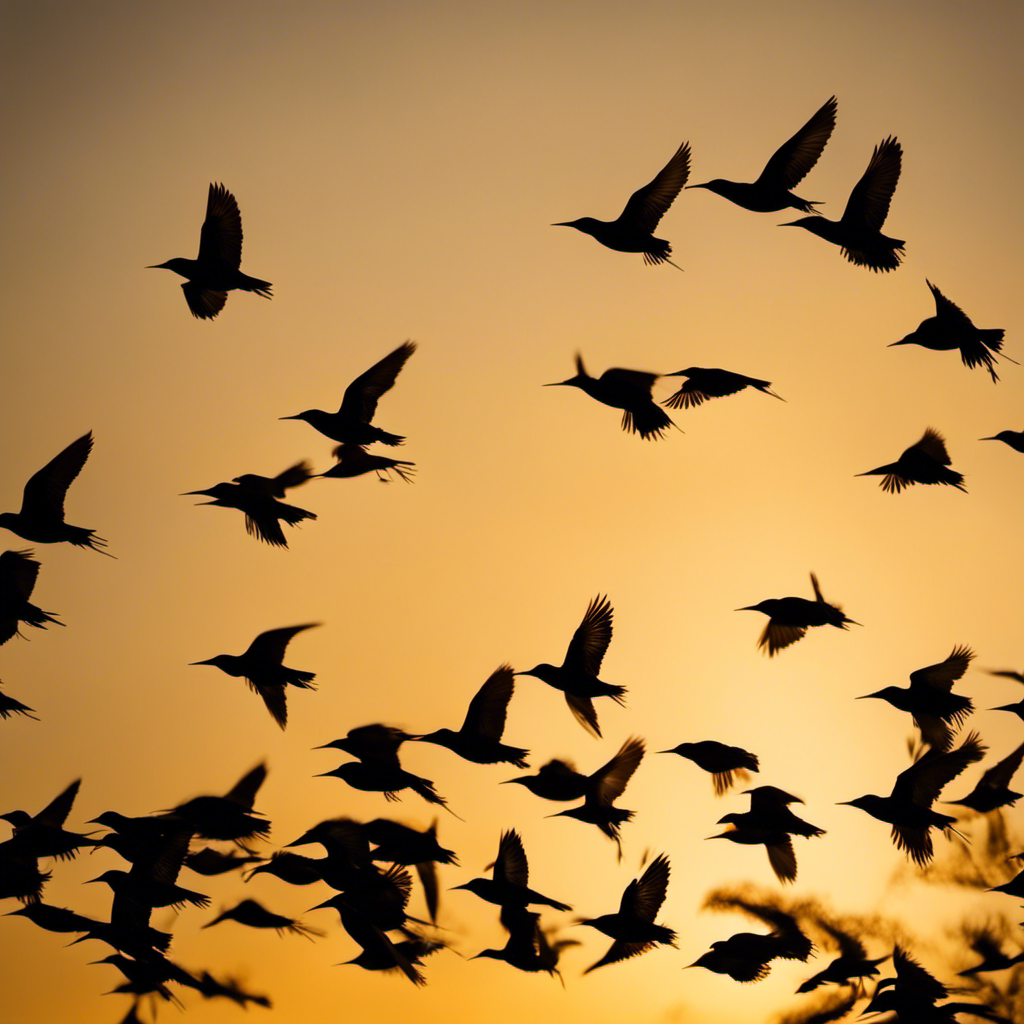
When exploring Pennsylvania, keep an eye out for the European Starling, as it is a common bird species in the state. The European Starling, also known by its scientific name Sturnus vulgaris, is an invasive species in Pennsylvania. This bird species was introduced to North America in the late 1800s and has since spread rapidly throughout the continent, including Pennsylvania. Its impact on native bird populations has been a cause for concern among scientists and conservationists. European Starlings compete with native bird species for resources such as food and nest sites, often outcompeting them due to their aggressive behavior and adaptability. In addition, their large nesting colonies can displace native cavity-nesting species, further exacerbating the negative impact on local bird populations. Understanding the behavior and nesting habits of European Starlings is crucial in developing effective conservation strategies to mitigate their impact on native bird species in Pennsylvania.
| European Starling | |
|---|---|
| Scientific Name: | Sturnus vulgaris |
| Native to: | Europe |
| Introduced to: | North America |
Great-tailed Grackle
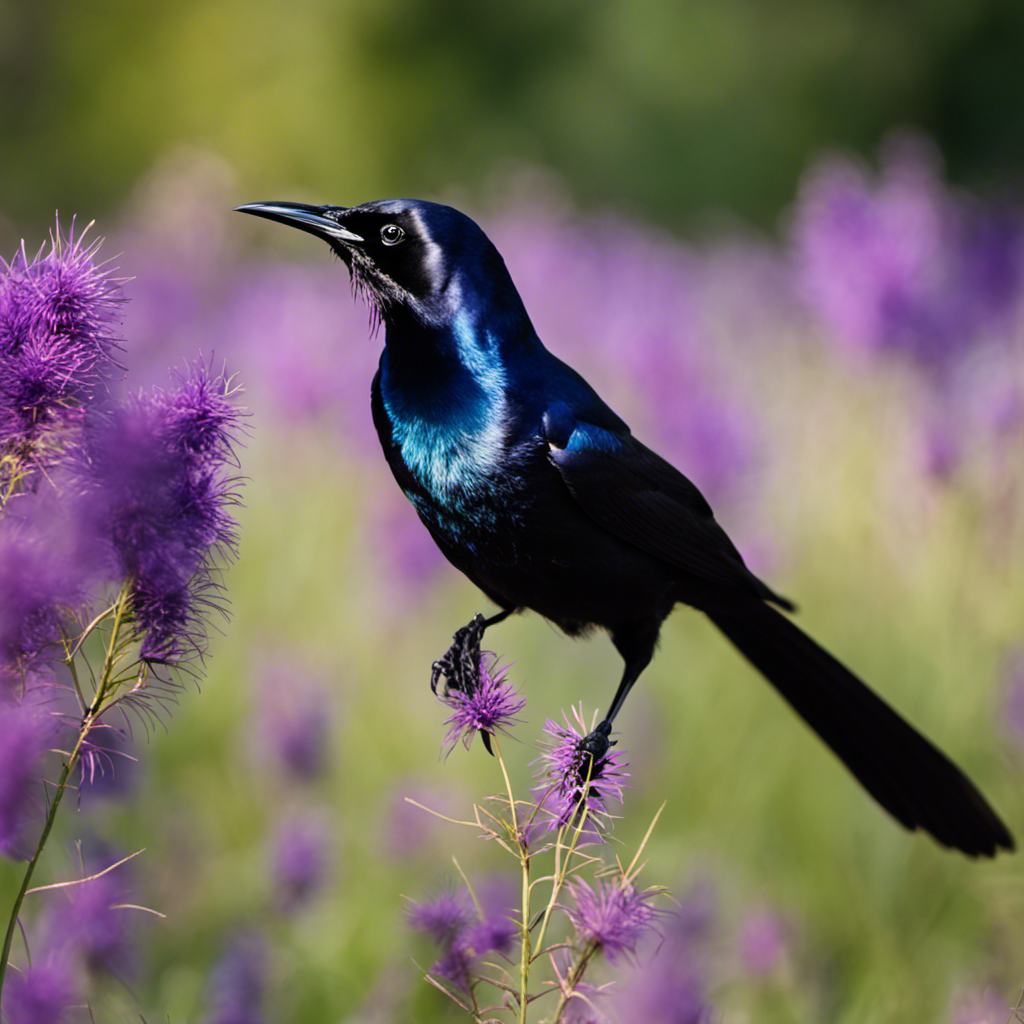
Keep an eye out for the Great-tailed Grackle, a large black bird with a long, distinctive tail, as it can often be spotted in Pennsylvania. This species is known for its unique breeding habits and migratory patterns.
Here are some key points to understand about the Great-tailed Grackle:
Breeding Habits:
The Great-tailed Grackle typically breeds in colonies, with males showcasing elaborate courtship displays to attract females.
Nests are built in trees, shrubs, or man-made structures, such as buildings or utility poles.
Females lay 3-5 eggs, which hatch after an incubation period of approximately two weeks.
Both parents share nest-building, incubation, and feeding duties.
Migratory Patterns:
Great-tailed Grackles are year-round residents in southern parts of their range, including Mexico and Central America.
They undertake short-distance migrations to breed in the northern parts of their range, including Pennsylvania.
Migration typically occurs in spring and fall, with flocks moving in search of suitable breeding grounds and food sources.
These insights into the breeding habits and migratory patterns of the Great-tailed Grackle provide a better understanding of this fascinating bird species.
Bronzed Cowbird
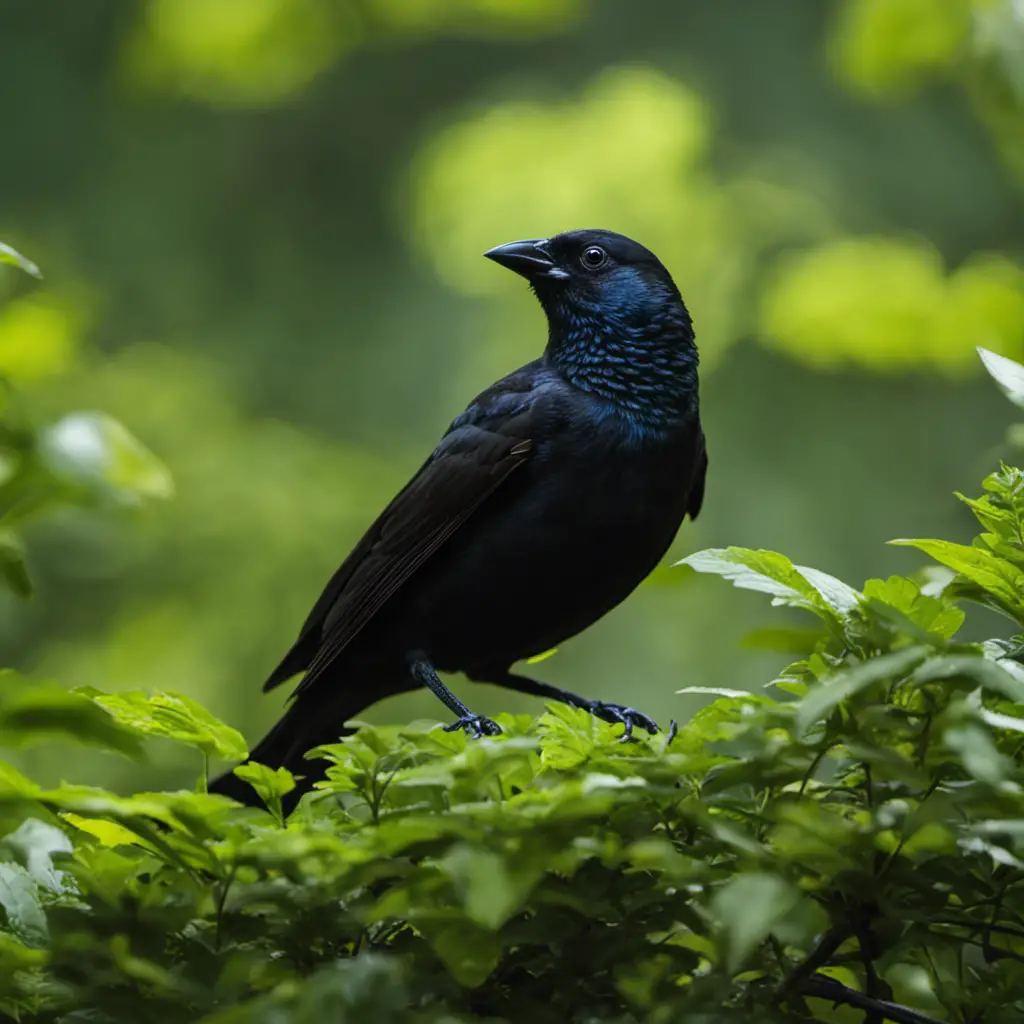
You can easily identify the Bronzed Cowbird by its glossy black plumage and its habit of laying eggs in the nests of other bird species. This breeding behavior is known as brood parasitism, and it has significant implications for other bird species in Pennsylvania. The table below provides a summary of the discussion ideas regarding the breeding habits and nesting behavior of the Bronzed Cowbird, as well as its impact on other bird species in Pennsylvania.
| Discussion Ideas | Bronzed Cowbird |
|---|---|
| Breeding Habits and Nesting Behavior | – Lays eggs in the nests of other bird species |
| – Does not build its own nest | |
| – Relies on other birds to raise its young | |
| Impact on Other Bird Species | – Can negatively impact the reproductive success of other bird species |
| – Competes for resources with native bird species | |
| – Can lead to declines in native bird populations |
Understanding the breeding habits and nesting behavior of the Bronzed Cowbird is important for managing its impact on other bird species in Pennsylvania. Efforts to mitigate the negative effects of brood parasitism and protect native bird populations are crucial for maintaining the biodiversity of the region.
Shiny Cowbird
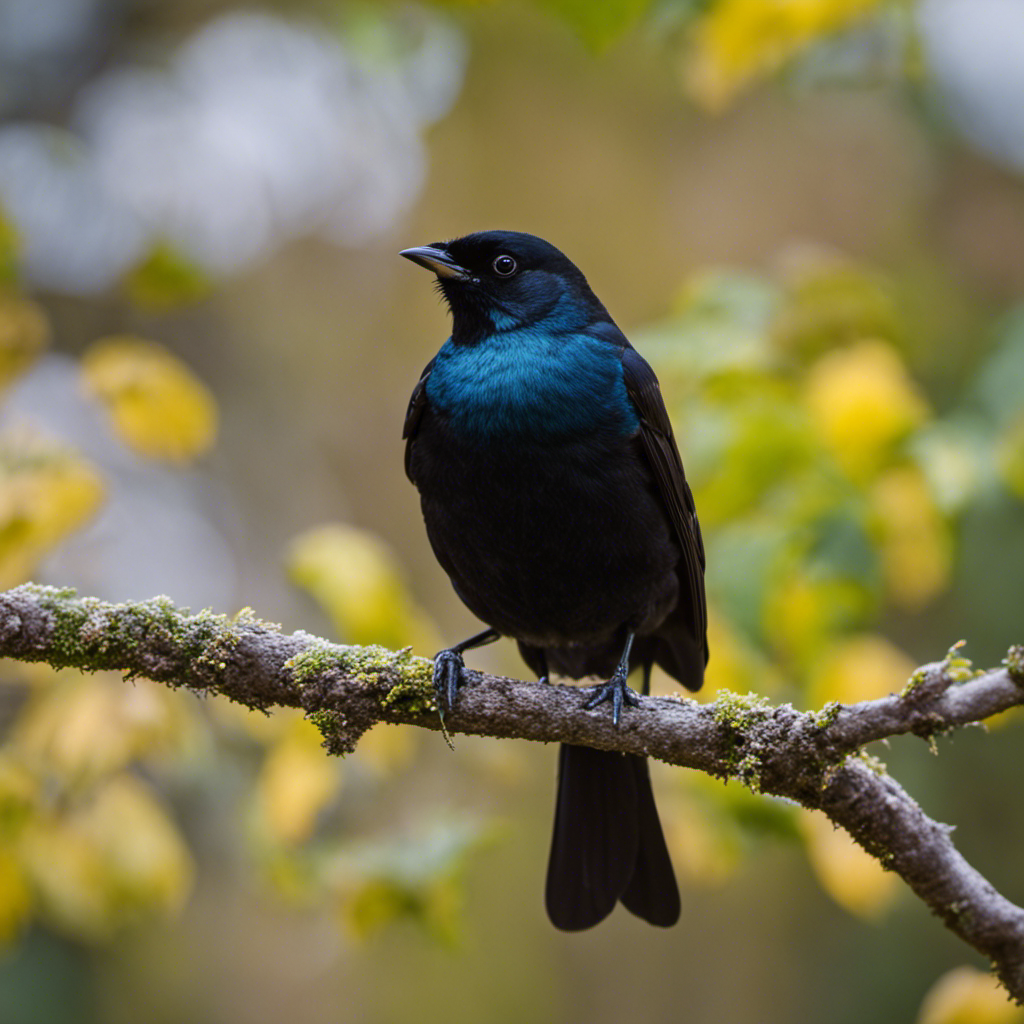
To fully understand the impact of the Shiny Cowbird, it’s important to examine both its breeding habits and nesting behavior in relation to other bird species in Pennsylvania.
The breeding habits of the shiny cowbirds in Pennsylvania are quite fascinating. They’re known to be brood parasites, meaning they lay their eggs in the nests of other bird species. This behavior allows them to offload the responsibility of raising their young onto other unsuspecting birds.
However, this behavior has a negative impact on native bird species in Pennsylvania. The shiny cowbirds often outcompete native bird species for nest sites, leading to a decline in their populations. Additionally, the shiny cowbirds’ eggs hatch earlier and grow faster than those of the native birds, giving them a competitive advantage.
This ultimately results in a decrease in the diversity and abundance of native bird species in Pennsylvania.
- Shiny cowbirds are brood parasites, laying their eggs in the nests of other bird species.
- They outcompete native bird species for nest sites.
- Shiny cowbird eggs hatch earlier and grow faster than those of native birds.
- This leads to a decline in the populations of native bird species.
- The presence of shiny cowbirds results in a decrease in the diversity and abundance of native bird species in Pennsylvania.
Giant Cowbird
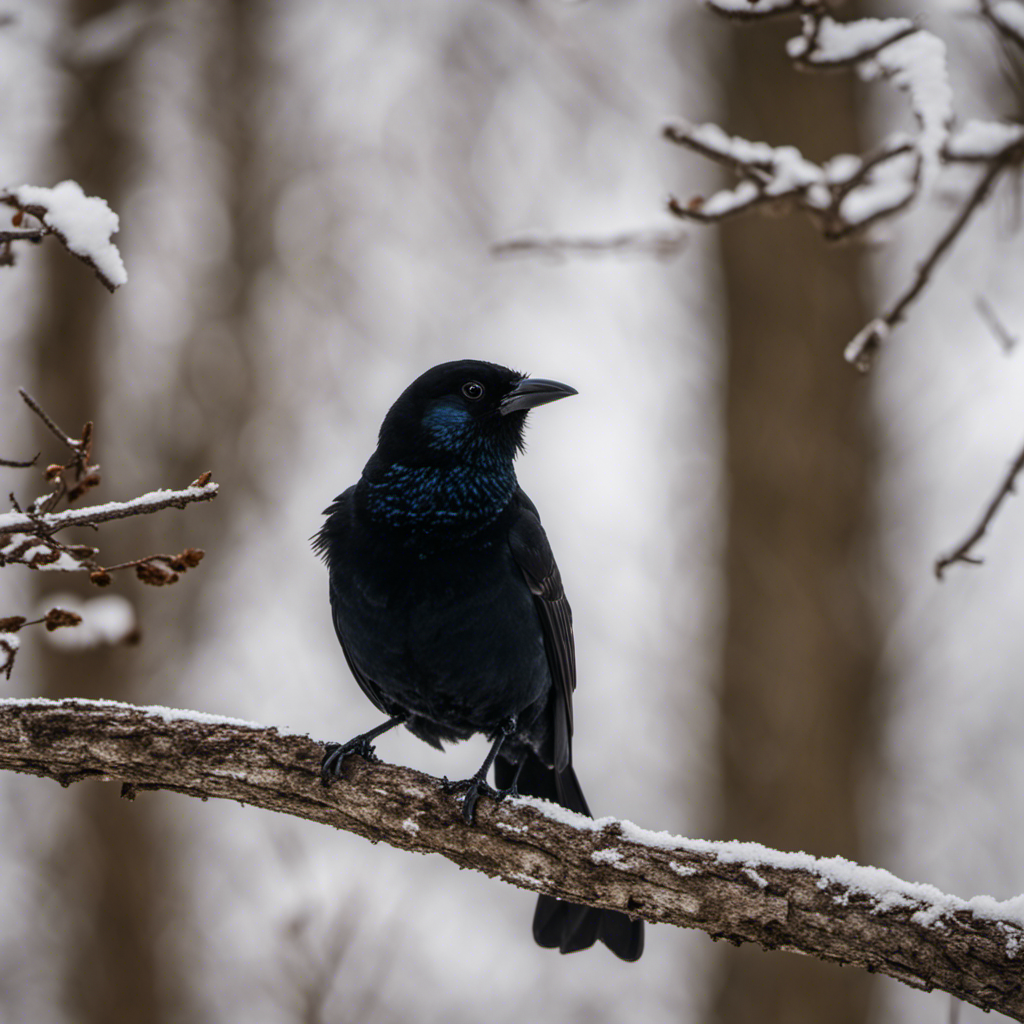
The Giant Cowbird is certainly an interesting species to study, as it exhibits similar brood parasitic behavior as the Shiny Cowbird. This species, Molothrus oryzivorus, is primarily found in Central and South America, with some individuals occasionally venturing into southern Texas.
Like its shiny counterpart, the Giant Cowbird lays its eggs in the nests of other bird species, relying on these host species for incubation and parental care. This reproductive behavior allows the cowbird to save energy and resources, as it doesn’t have to invest in raising its own young. However, this behavior can have negative impacts on the host species, as the cowbird eggs may hatch earlier and outcompete the host’s own offspring for resources.
Understanding the dynamics of host species interactions and the reproductive strategies of the Giant Cowbird can provide valuable insights into the coevolutionary processes between brood parasites and their hosts.
Frequently Asked Questions
How Can I Attract Black Birds to My Backyard in Pennsylvania?
To attract black birds to your backyard in Pennsylvania, consider using bird feeders. These feeders can provide the birds with a reliable food source, which may entice them to visit and stay in your yard.
Are Black Birds Harmful to Crops or Gardens in Pennsylvania?
Black birds, also known as blackbirds, can be harmful to crops or gardens in Pennsylvania. Their feeding habits include eating fruits, vegetables, and seeds, which can result in significant damage to agricultural produce.
Are Black Birds in Pennsylvania Known to Migrate?
Black birds in Pennsylvania are known to migrate. Their behavior and population trends indicate that they engage in seasonal movements, often traveling long distances to find suitable habitats and food sources.
Do Black Birds in Pennsylvania Have Any Predators?
Black birds in Pennsylvania have predators like hawks, owls, and snakes. These predators play a crucial role in maintaining the ecological balance. Understanding the black birds’ behavior and diet can provide insights into their interactions with predators.
What Is the Significance of Black Birds in Pennsylvania’s Ecosystem?
The significance of black birds in Pennsylvania’s ecosystem lies in their impact on local agriculture. These birds play a crucial role in controlling insect populations, which helps to maintain ecological balance and protect crops.
Are Black Birds Commonly Found in Pennsylvania?
Black birds are indeed commonly found in Pennsylvania, but what about brown birds? While black birds such as crows and ravens are a frequent sight in the state, brown birds pennsylvania might not be as prevalent. The rich biodiversity of Pennsylvania offers a variety of bird species, but it’s the black birds that steal the show with their distinct appearance and widespread presence.
Conclusion
In conclusion, Pennsylvania is home to a diverse array of black bird species. From the Red-winged Blackbird to the Giant Cowbird, these birds contribute to the ecological balance of the region.
Scientifically speaking, their presence indicates a healthy habitat with ample food sources. Objectively, their distinct characteristics and behaviors make them fascinating subjects for study.
Analytically, understanding the population dynamics and interactions of these black bird species can provide valuable insights into the overall health of Pennsylvania’s avian community.

An avid ornithologist, zoologist and biologist with an unwavering passion for birds and wild animals.
Dr. Wilson’s journey in ornithology began in childhood and led him to obtain a Ph.D. in Ornithology from the prestigious Avian Research Institute. He has worked closely with renowned experts in the field and conducted extensive research and field studies globally.

